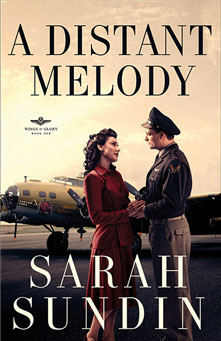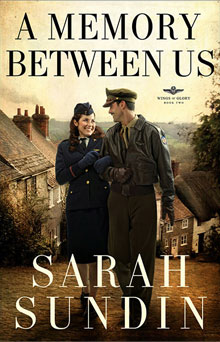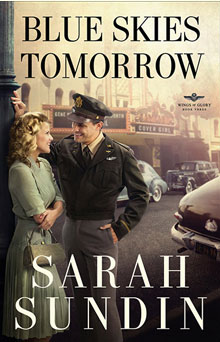Wings of Glory
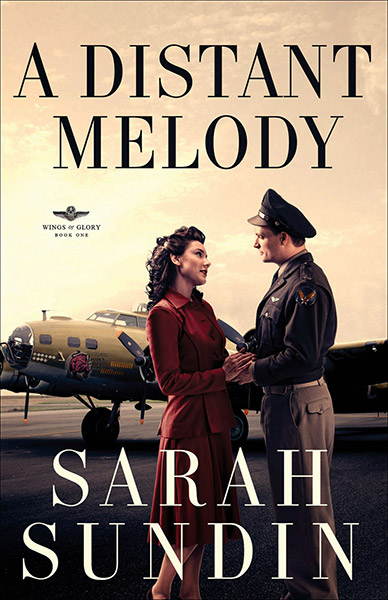
A Distant Melody
Book 1 in the Wings of Glory Series
Never pretty enough to please her gorgeous mother, Allie will do anything to gain her approval—even marry a man she doesn’t love.
Lt. Walter Novak—fearless in the cockpit but hopeless with women—takes his last furlough at home in California before being shipped overseas. Walt and Allie meet at a wedding and their love of music draws them together, prompting them to begin a correspondence that will change their lives.
As letters fly between Walt’s muddy bomber base in England and Allie’s mansion in an orange grove, their friendship binds them together. But can they untangle the secrets, commitments, and expectations that keep them apart?
“Sundin’s debut Christian historical romance introduces an emotionally gripping, detail-rich but fast-paced trilogy. Romance readers and military history buffs will find much of interest here.”
Editors’ Choice. “An impressive World War II romance full of courage, sacrifice, and lessons learned. The time Sundin has put into researching aviation during the war is evident, and she does an excellent job weaving those details into the story. Perfectly plotted, dramatic and full of tension, this is an excellent start to the new Wings of Glory series. Highly recommended.”
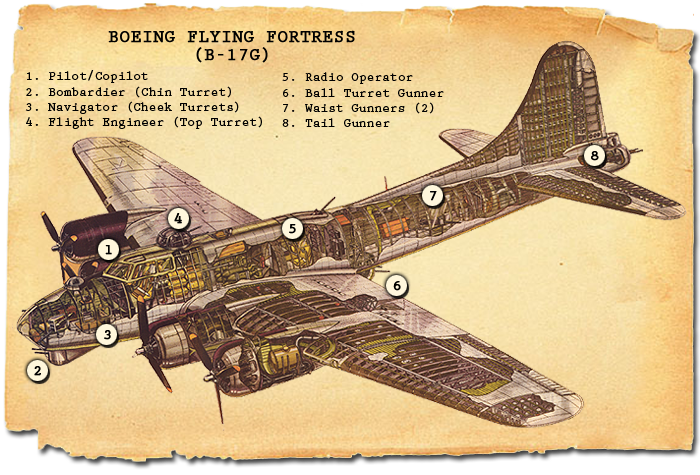
Cutaway diagram of a B-17G Flying Fortress (Sarah Sundin) *Note: Walt’s plane in A Distant Melody, and Jack’s plane, Sunrise Serenade, in A Memory Between Us, are both B-17Fs, which lack the chin turret designated by #2 in the diagram. Jack’s other planes, and all Ray’s planes in Blue Skies Tomorrow, are B-17G models as shown in the diagram.
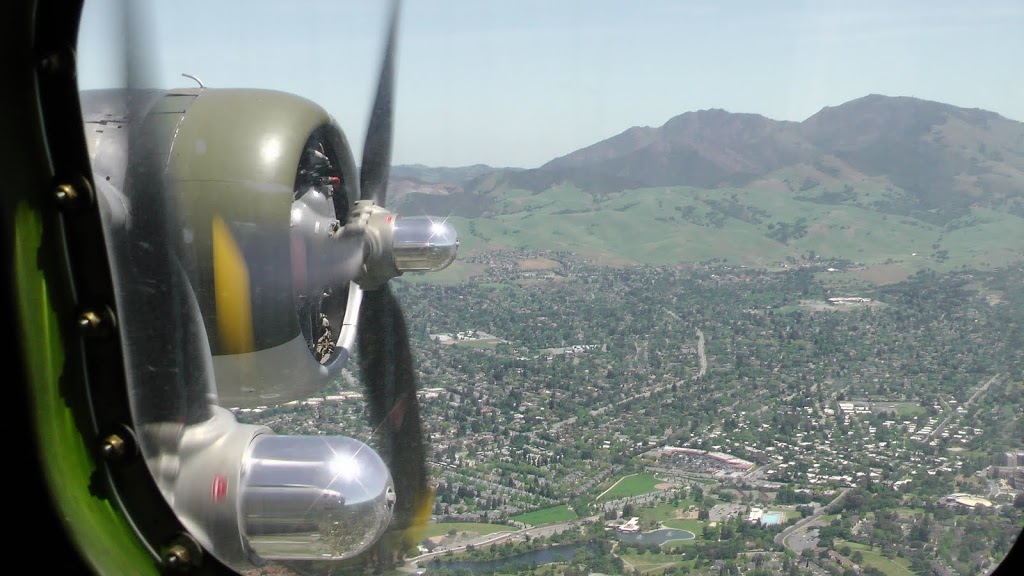
I sure did! In May 2011, the Experimental Aircraft Association visited Buchanan Field in Concord, California, and I had the privilege of flying in their beautifully restored B-17G, Aluminum Overcast. I’ve enjoyed walking through this plane every year, and then one of my readers, who volunteers with EAA, arranged for me to participate in the media flight. I took a YouTube video of the flight and wrote a blog post describing my experience. It was a rollicking fun ride!
To learn more about the B-17 Flying Fortress and the men who flew in them, please see my articles on the B-17 Flying Fortress and on the B-17 crew.
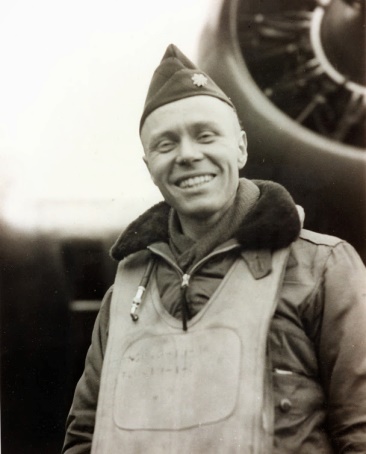
Walt and Allie’s story was brewing for a while, and I knew he was a pilot. Then I saw a special on the History Channel about the Eighth Air Force, and I was moved by the stories of what those men endured. In addition, my great-uncle, Roderick Stewart (yes, the original Rod Stewart), had been a B-17 pilot.
Uncle Rod flew a B-17 under the Golden Gate Bridge (obviously against regulations) and flew into Pearl Harbor during the Japanese attack in a squadron of twelve B-17s. He went on to fly missions from Australia with the 7th and the 19th Bomb Groups, and then served as a squadron commander with the 94th Bomb Group in England. I based the career of Walt’s brother, Jack, loosely on my great-uncle’s career.
A ten-page memoir of Lt. Col. Roderick Stewart is on the Witness to War website.
Yes and no. In 1907, the US Army formed the Aeronautical Division, which became the Aviation Section in 1914, and the Air Corps in 1926.
The Army Air Corps was officially renamed the Army Air Forces on June 20, 1941, less than six months before the US entered WWII. However, the Air Corps term was still used informally. The US Air Force officially separated from the Army in 1947. (source: Craven, Wesley F. & Cate, James L. The Army Air Forces in World War II: Volume One; Plans and Early Operations; September 1939 to August 1942. Washington DC: Office of Air Force History, 1948.)
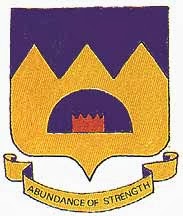
All towns mentioned are real as was the 306th Bombardment Group, and I’ve tried to incorporate as many true details as possible. However, because the towns are populated by fictional people, I created fictional businesses for them to own or work at. Likewise, all the churches are fictional except St. Paul’s in Bedford, England.
The only real-life person who appears in A Distant Melody is Col. Frank Armstrong, commanding officer of the 306th. Other real-life people mentioned include Generals Spaatz, Eaker, and Longfellow, Colonel Overacker, Lt. John McKee, and Sgt. “Snuffy” Smith. My only regret is the necessity of “bumping” real-life heroes to make room for my fictional bomber crewmen.

